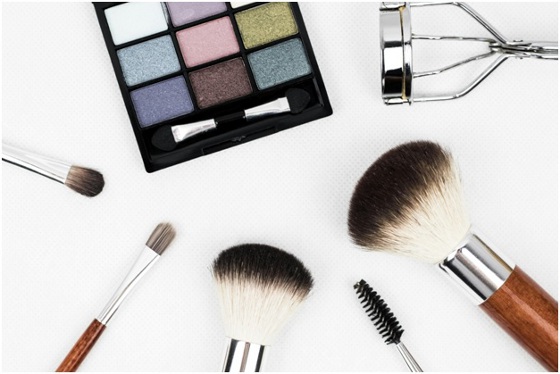In the quest for flawless skin, makeup enthusiasts have found a powerful ally in colour correctors. Whether it’s concealing dark circles, redness, or discolouration, these versatile products can work wonders. But with a myriad of options available, the question arises: How do you choose the right colour corrector for your specific needs?
Here we delve into the fascinating world of colour correctors to achieve an immaculate complexion. Join us as we go deeper into the fascinating concept of colour theory and unearth insider tips that will reveal the secret to radiant, even-toned skin.
Ready to embrace newfound confidence? Let’s bid farewell to those troublesome imperfections with colour correctors.
Understanding Colour Theory and Colour Correctors
The Colour Wheel
The colour wheel is like an artist’s palette, comprising various colours arranged in a circle. For colour correction, we focus on complementary colours, which are positioned opposite to each other on the wheel. These, when combined, neutralise one another to give a clear tone. For instance, green counteracts redness, while peachy or orange hues conceal dark circles and blue tones.
Different Colour Correctors for Different Concerns
Colour correctors come in various colours to target specific skin issues. Here’s a quick rundown:
- Green: Ideal for concealing redness caused by blemishes or rosacea.
- Peach or Orange: Effective in hiding dark circles, especially on deeper skin tones.
- Yellow: Brightens dullness and helps with mild redness.
- Lavender or Purple: Counters sallowness and adds radiance to yellow undertones.
- Pink: Conceals dark spots and brightens fair skin.
- Blue: Neutralises orange tones, commonly found in self-tanner mishaps.
- Red or Salmon: Masks dark circles, especially on fair skin tones.
Determining the Right Colour Corrector for Your Skin Concerns
- Redness and Blemishes: If you struggle with redness from acne, rosacea, or irritation, a green colour corrector is your go-to option. Apply it sparingly on the affected areas to neutralise the redness before foundation application.
- Dark Circles and Hyperpigmentation: For those pesky under-eye circles or dark spots, opt for peach, orange, or salmon correctors. These shades work wonders in cancelling out the bluish or brownish tones, creating a more even base for concealer.
- Dull or Sallow Skin: To add a healthy glow and counteract sallowness, lavender or purple correctors work like magic. They can bring life to dull complexions, especially if you have yellow undertones.
Choosing the Right Formulation and Application Techniques
- Cream Correctors: These are best suited for dry or normal skin types. They provide good coverage and blend seamlessly with your foundation. Use your fingertips or a makeup sponge to apply and blend the product.
- Stick Correctors: Convenient and easy to use, stick correctors are suitable for all skin types. They are great for on-the-go touch-ups and offer buildable coverage. Apply directly to the areas of concern and blend with gentle tapping motions.
- Liquid Correctors: Ideal for oily or combination skin, liquid correctors offer a lightweight feel. They provide natural-looking coverage and are easy to blend with a brush or sponge.
Remember to start with a small amount of product and build it up gradually to avoid a heavy or cakey appearance. Additionally, always finish with a thin layer of foundation or concealer that matches your skin tone to achieve a seamless, flawless finish.
The Importance of Skin Prep and Trial & Error
- Skin Prep: Properly preparing your skin is essential for a flawless colour correction application. Start with a clean, moisturized face, followed by a face primer to create a smooth canvas for the corrector and foundation. This step ensures better adhesion and longevity of the makeup.
- Trial & Error: Don’t be discouraged if you don’t get it right on the first try. Colour correcting can be a trial-and-error process, as different products and shades work uniquely for each individual. Experiment with small amounts and observe the results to find what works best for you
Blending Techniques for Seamless Results
- Pat and Blend: To avoid harsh lines, gently pat and blend the colour corrector into your skin using your fingertips or a makeup sponge. Avoid vigorous rubbing to prevent smudging or disturbing the corrector’s effectiveness.
- Feathering: If you’re dealing with a large area of concern, like redness on cheeks or dark circles under the eyes, use feathering techniques. Gradually blend the corrector outward in feather-like strokes for a natural finish.
Layering Correctors for Customized Solutions
- Multi-Correcting: Sometimes, you may have multiple skin concerns in different areas. Layering correctors can be an effective approach. Apply specific correctors to each concern and blend them seamlessly.
- Foundation Balance: To achieve a balanced complexion, use colour correctors in moderation. Heavy layering can result in an unnatural appearance. Remember, colour correction is a preparatory step, and the foundation should be used to even out the overall complexion.
The Bottom Line
In conclusion, mastering the art of colour correction can lead to a flawless and radiant complexion. Remember the fundamental principles of colour theory: understanding the colour wheel and how complementary shades neutralise specific skin concerns. Whether it’s concealing redness, dark circles, or sallowness, there’s a colour corrector tailored to address your unique needs.
When choosing among colour correctors, identify your skin concerns and opt for the right shade and formulation that suits your skin type. Remember to prep your skin adequately and be patient with the trial-and-error process; finding the perfect match might take a little experimentation.
As you embark on your colour-correcting journey, don’t forget to explore more blogs and resources, such as those available on tira, to expand your knowledge and refine your makeup techniques. Embrace the power of colour correctors, and with a little practice, you’ll be well on your way to achieving a flawless and confidence-boosting makeup look!




















